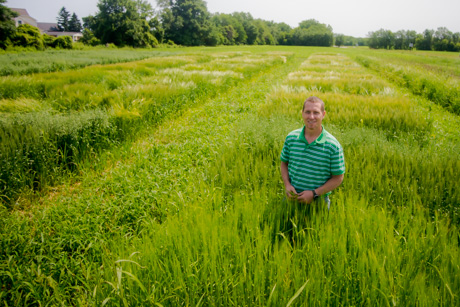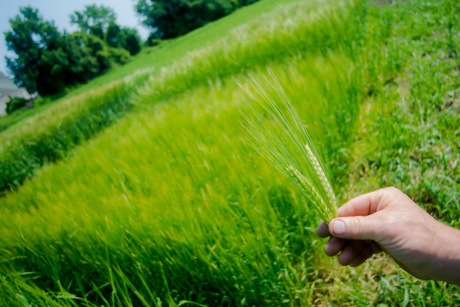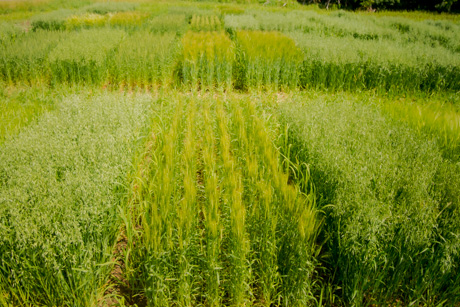
The effort to bring back malting to Upstate New York is a multi-year process.
Working with Cornell University, Ted and Patty Hawley, owners of New York Craft Malt on Bank Street Road, Batavia, are in their third year of running trials of malting grain in Genesee County Farm fields.
There's a plot on Hawley-owned farmland off Bank Street Road and another on Porter Farms, plus the Hawleys have some grain growing on other local farms.
The trial involves 34 varieties of barley, plus wheat and oats.
"We've got to look at all aspects of it, and it's a hard go," Hawley said. "Cornell won't really give their recommendation for four or five years."
The challenges in Western New York have to do primarily with weather -- the year-to-year variances, but more importantly the overall amount of moisture in ground and air.
Malting grains are highly susceptible to fungal diseases, so what researchers want to find are those varieties that grow well in this climate and stay health without sprouting two quickly (once the grain head sprouts, it can no longer be malted).
"Our region is very finicky," Hawley said.
The process involves two key sets of analyses.
First, researchers want to determine how well a variety grows locally, or its agronomics for a farmer. It's important to determine the quality and quantity of the protein, how it germinates and its yield (more yield, more profit per acre).
Second, the grain needs to be malted. The test isn't about taste or any subjective measurement. Researchers are looking at protein, enzymes and how well it malts.
Brewers are looking for good, locally grown grains because the farm brewery law requires locally produced, craft beers to contain a certain percentage of local agriculture product.
But Hawley said local brewers and growers are also looking to produce an interest among consumers to seek out totally local beers. They are working together on a marketing plan that would provide bars with a "Local" tap that would only be attached to kegs of locally brewed beer that uses only locally grown ingredients.
"I think once the consumer wants it, brewers are going to have to give it to them and then I think it's going to grow," Hawley said.

A two-row variety and a six-row variety.

